Grapes at all times were considered a southern and thermo-loving plant, which is simply impossible to grow without a sufficient amount of sunlight. To put on its plot, the vine - the dream of any gardener is not only in the southern regions of the country, but also in a colder with a harsh climate. Many even recently, many could not even think about growing grapes in the Urals, where strong frosts reign and very short summer.
However, thanks to the tremendous work of domestic breeders, a large number of grape varieties for the Urals were derived, which have good resistance to frost, pests and differ in early fruit. All this helps to successfully grow grapes in the Urals in the open soil, although this process still requires compliance with some rules.
In this article, we consider the peculiarities of growing grapes in the Urals, we give a description of the most popular varieties for the locality, as well as note the important moments of landing and care for grapes in the climate of the Southern Urals.
Description of grapes and features of its cultivation in the southern Urals
Grapes are a long-term grassy liana, which refers to the genus grapes and belongs to a large grape family. Optimal territories for growing this culture are areas with a moderate or subtropical climate, where there are no sharp drops of day and night temperatures and there is a long warm summer. That is why ordinary grape varieties are not suitable for cultivation on the territory of the Southern Urals, where harsh winters are marked with frosts up to -40 degrees, very short summer with rainy and windy weather, sharp temperature differences. For such sufficiently complex territories, breeders specifically derived a zoned sustainable varieties that give early yields and can withstand strong frosts. Grapes in the Southern Urals are a troublesome business, but gives good yields of delicious berries.
Grapes are known to mankind from ancient times. The progenitor of modern cultural grapes was the wild forest grapes, which grown through the mediterranean coast. It is worth noting that it is the grapes that is considered one of the first plants that a person began to cultivate. Evidence on the use of grapes in winemaking was found archaeologists on bas-reliefs and drawings in the tombs of pharaohs, where the figures of the leaves and the berries of grapes are depicted. More than 7,000 people began to cook wine from grapes, and about 4,000 years ago there is a mention of trade in the ancient Greeks. In the territory of Russia until the 17th century, wine was imported, but already in 1613 the first vineyard was laid in Astrakhan and since then the large-scale cultivation of this culture in production purposes began.
To date, the development stepped far forward, which allows you to grow grapes in the Urals in the greenhouse and in the open soil.
Description of grapes
- Grapes are a long-term liana, the vine of which can tare all of the next.
- When growing grapes in the southern territories, the vine can reach a length of about 20-30 m. If we talk about the territory of the Southern Urals, these conditions can possibly grow a lot of 2-3 meters.
- In grape shoots, the mustache grow, with the help of which the vine is clinging for a natural or artificial support.
- The vineyard is formed from different shoots. Older shoots are brown and covered with thick and tired bark. Younger shoots have a yellowish or reddish hue and have flexibility.
- During the growing season, shoots are completely covered with solid, regular leaves that are attached with a long paper.
- Vint leaves consist of 3 or 5 blades and have a bright green shade.
- Not only the kidneys of the leaves are formed on shoots, but also laid inflorescences, according to the abundance of which can be judged by the future crop.
- Flowers in grapes are very small, light green shade. These ripple flowers are collected in loose bumpy inflorescences.
- The flowering of the vineyard in the southern regions begins approximately in May-June, however, in the southern Urals, this stage will be slightly displaced in time due to long warming of the soil after winter.
- For the South Urals, the vineyard is optimal, on which fruiting begins 100-115 days after the tying of the inflorescence.
- After ripening on shoots, the bunches of grapes are formed, which can have a variety of shape from oblong to more rounded. An important feature of the cultivation of grapes in the South Urals is that on one vine you need to leave only 3-4 bunches of grapes. This is due to the fact that all the formed clusters simply will not be able to grow before the onset of cold weather, but the plant itself will give all the forces on their ripening, which will affect the taste qualities of the berries.
- Grape berries can be the most different color: yellow, green, pink, dark red, black and purple.
- Most often, all grape berries are covered with a wax raid.
- In some berries, seeds are formed, which can be from 1 to 4.
- To date, the use of grapes is quite extensive. Juices are made from berries. Jams, jam, raisins, vinegar and wine. Used grapes and in cosmetology and pharmacology - oil squeezed out of grapes. And the leaves of the vineyard are often used to prepare dishes.
Best grapes for southern Urals
To date, a large number of streaky and unappropriate varieties of grapes for landing in colder territories has already been derived. The most important rule of the full formation of the grape bush in the Urals is the correctly selected variety of culture. It must be a time-tested winter-resistant and early ripening varieties that can grow perfectly in fairly harsh conditions of the Urals. We give an example of the most popular grape varieties for this area.
- Grape grapes "Zilga". This variety is distinguished by winter resistance and unpretentiousness, which contributes to the landing of grapes in the Urals. Maturation occurs in approximately 115-120 days, which makes it possible to attribute the variety to the early. On the shoots there are storms of medium size, which consist of rounded purple berries. The weight of one cluster can be approximately 100 grams. Berries are very fragrant with sour and sweet taste. The shoots of this variety can be recovered even after a small frozen.
- Grade "Memory of Dombowskaya". This grape variety is considered the most popular among the Gardeners of the Urals. It is distinguished by good endurance and winter resistance. Maturation occurs after 90-100 days, which is optimal for climatic conditions and short summer of the Southern Urals. The shrub itself is quite high with a thick vine, on which dense and fairly large clusters are formed. The weight of one cluster can average about 300-800 grams. Consist the bunch of rounded black and blue berries, there are no bones, very sweet. The variety is highly yield, as 90% of its shoots are capable of fruiting. That is why in the conditions of the climate of the Urals, the harvest of this variety should be normalized.
- Grape variety "Aleshhenkin" or "Alesha". The maturation of the berry of this variety occurs around 115 days. Resistant to severe frost and harsh winters, gives a stable and good harvest even in a short rainy summer. On shoots ripen big borders I berries in the form of a cone. The weight of one cluster can reach about 700 grams, there are copies and up to 2.5 kg. The cluster consists of large oval berries of an amber shade. Half of the berries in the bunches does not have a bone, the taste is very sweet. In the climate of the South Urals climate, the removal of the part is required, so that the rest manage to completely mature.
- Grade "Memory Shatilova". Also a very popular grade for cultivation in the territory of the Urals. It is recommended by novice gardeners. This is an early grade, berries completely ripen in about 100 days. It has a good harvest even in cool and rainy summer conditions. Differs good winter resistance. On shoots ripen quite large clusters, the weight of one can reach about 600-700 grams. Berries of a light golden shade, taste very sweet.
- Grade "Muscat White". Another excellent grade for growing on the territory of the South Urals. It is an early variety, the full ripening of the berries comes in about 90-100 days. On the shoots form a bunch, the weight of which on average is 300 grams. Berries are rounded, rather large, white. To taste very sweet with a small nutmeg taste.
- Grape variety "Muscat Pink". Early grade, the maturation of the berry of which takes about 110 days. Differs good winter hardiness. Breaks are large, conical shape, the weight of one can be approximately 700 grams. Berries have a pink shade, large in size. The taste is sweet with a nutmeg.
- The grade "Beauty of the North". Also early grade, to sleep with a berry of which is needed about 110 days. The variety is distinguished by a stable and good harvest, low-temperature resistance. The clusters of the medium size, the weight of one can reach about 500-600 grams. Berries of oval shape and a bright shade with a very pleasant taste.
- Grade "Negritenok". Refers to medium-grained grades, the ripening period is approximately 125 days. The bunch is quite large, by weight can be 600 grams, consists of a berry of a brown shade. Berries taste very sweet.
Vintage in the Southern Urals: Common ways
In order to understand how to plant grapes in the Urals, it is important to clearly figure out in all possible ways of reproduction of this culture. Grapes can be divorced by independently seeds, cuttings, giving and vaccinate. However, most of these methods are not suitable for growing grapes in the climatic conditions of the Southern Urals. The optimal yield in this case is the use of reproduction with weird and green cuttings.
Vintage in the southern Urals with weeds
- First of all, it is necessary to prepare cuttings. It usually coincides with the formation of grapes in the Urals, i.e. With his trimming.
- It is necessary to choose good overwhelming shoots with a thickness of at least 7-10 mm with a length of interstitials about 7-10 cm. After that, the shoots need to cut into the cuttings, the length of which should be 10-15 cm. In this case, there should be 3-4 kidneys on each cutlets.
- Nizhny cutout should be made at an angle of 45 degrees.
- Next, the cuttings need to be prepared for storage. For this, they are soaked for a day in water, after which they are disinfected with a weak solution of copper sulphate. Make sure the landing material you need to dry, wrap in paper and cover with a film.
- Store cuttings need at a temperature of 0-5 degrees in the refrigerator or basement.
- In the spring in the Urals, grapes can begin to root. This period falls about February-March.
- Remove cuttings from shelter and carefully inspect them, then process them with a weak solution of manganese and put in a container, by 6-7 cm filled with water from a drop of honey. This will allow cuttings to eat water. From above, they must be covered with a film.
- After this procedure, a small incision should be made on the lower cut.
- Prepare small containers of the type of plastic glasses and fill them with soil mixture, which should consist of sand, peat and humus.
- In the soil they make a deepening, a little sand falls asleep on the bottom and put a stalk, which also fall asleep with sand. The upper kidney should be only a little sprinkled with sand.
- The upper cut is processed by a garden boiler.
- To ensure optimal rooting, you need to organize lower heating.
- At the end of April or in early May, after quenching, the cuttings are planted in large containers and kept in a greenhouse. In September, you can land at a permanent place.
Preparatory work before planting grapes in the Urals
The climate of the Southern Urals is quite specific and requires special attention to landing of various cultures, especially such thermo-loving as grapes. To grow and get strong grape shrubs, giving a rich harvest of berries, it is necessary to spend thorough preparatory work. To do this, it is important to choose a variety of varieties and seedlings, as well as pick up the optimal place to land.
Stage 1. Selection of grapes and grape seedlings for the Urals
- The most important step towards obtaining a fruitless grape is the right choice of a culture variety.
- It is important to give preference only by winter-hardy varieties, which were derived solely for territories with a cold climate.
- All varieties should relate to the group of early or medium ripening, i.e. Full ripening of fruits should occur in about 90-125 days.
- When choosing a concrete grape variety for the Urals, focus on the zoned varieties that are already adapted to all weather conditions of your area.
- Such seedlings can be purchased in district nurseries or familiar gardeners who have long grown grapes.
- It is best to buy grape seedlings in February so that young plants manage to put roots.
- Also acquire preferably seedlings with several young shoots.
- Before buying it is very important to carefully inspect the seedlock you choose. It should not be visible damage and signs of diseases. Root system and shoots should be healthy and strong, without discharged and dry sites.
Stage 2. Choosing a place to land grapes in the Southern Urals
- The yield of grapes will depend on the correct selected place for landing.
- For the Urals, only the southern or south-western part of the site will suit, where throughout the day there will be the sun.
- The selected place should be open and maximum sunny, because you can get completely ripe sweet grape berries.
- It is also important that the selected landing site was well protected from strong wind and drafts.
- Dry plot is a pledge of healthy grapes. It is important to choose a place on a small hill, where there will be no frequent stagnation of moisture in the roots.
- You should not land the grapes next to large shrubs and trees, their crown will interfere with the ripening of berries.
Stage 3. Selection and preparation of soil under the landing of grapes in the Urals
- Grape prefers to grow on fertile and light soils.
- The larger in the soil of nutrients and the organications, the better for the full growth of the plant. This must be taken into account, since the vineyard in one place grows about 25-30 years.
- It is important that the soil at the selected place was dry and did not delay moisture.
- Close soil waters are unacceptable for grapes in the Urals. There are plants near a small water branch or an artificial reservoir.
- In order to understand what to do with grapes in the spring in the Urals, it is important to spend thorough preparation of the soil. Since in the open ground, the seedlings of grapes are planted in approximately June-July, when the soil warms up to 15 degrees, the soil under the landing should be prepared approximately 2 months before that time. The selected plot must be carefully overhaul and explode, and then dig up the landing pit or trench. The size of the holes should be 1 m in the depth and 1 m in width. When using trenches, each plant should have at least 1 m.
How to plant grapes on the southern Urals - instructions
- The optimal time for planting grapes in the Urals end of June or the beginning of July.
- After preparing the landing pit in March or April, it is important to regularly shed water to the soil to compact.
- At the bottom of the landing pit or trench, it is necessary to pour a drainage layer, which should be approximately 6-8 cm. Claims, broken brick or gravel can be used as a drainage.
- Next, you need to prepare the soil mixture, which should consist of a garden land, humoring, phosphoric and potash fertilizer, as well as wood ash. This composition grape will be enough to develop fully.
- Grape seedlings put in the center of the landing pit and tilted a bit so that the root system looks north, and the top south. So grapes will be placed in the south.
- After that, the seedlings fall asleep, while the soil needs to be well sealing. Its surface should be slightly lower than the level of the pit. Until the end of the pit is filled in the next year.
- After landing and until the seedlings are rooted, they need to be regularly and abundantly, after which watering stops.
Landing grapes in the Urals - video
How to care for grapes in the Urals: Secrets and nuances of growing
Care of grapes in the Urals is slightly different from its cultivation in warmer regions, but these differences are insignificant.
- Watering. First of all, it is worth paying attention to the watering of this plant. Grapes does not endure excessive irrigation. From this shoots can black, and the root system start rotting. However, on the other hand, the lack of moisture can reduce the harvest. Abundant irrigation require young seedlings immediately after landing until the moment of complete rooting. After that, grapes are enough 5-6 polishers per season. The main watering should be carried out until the renal dissipation, two weeks before flowering and two weeks after it, as well as during the ripening of berries. It is also worth remembering that it is necessary to water a strictly on the surface of the priority circle using warm water. Watering is best in the evening. Waterproof irrigation should be carried out after trimming grapes before it preparations for winter - is used by about 20 liters per bush.
- Loosening and mulching. Regular loosening of the soil also has a beneficial effect on the full growth of the plant. You can loosen after each watering or more often if you see that the soil has seal. The rolling circle can be meditated to avoid excessive evaporation of moisture and soil erosion. As a mulch, you can use sawdust, bevelled grass, you can also plant the sites.
- Feeding If during the planting of the seedlings of grapes you made in the soil fertilizer, 3-4 years to feed the bushes there is no need - the plant has enough nutrients. During the whole season, it is desirable to feed grapes with organic fertilizers, it is much more useful for this culture than mineral fertilizers. In addition, placing the same humus into the rolling circle, you simultaneously loose and mulch the soil. The first feeding is carried out in the spring after the removal of the shelter is made superphosphate, potash fertilizers and nitrogen. The second feeding is carried out before the start of flowering - organic fertilizers with potash and superphosphate fertilizers are made together.
- Pruning grapes in the Urals. Pruning is necessary to improve the quality of the harvest, the formation of the bush. The first trimming can be carried out at the beginning of spring, about 5 degrees at temperatures above 5 degrees. It is necessary to do it very carefully. In the process, all damaged and broken shoots, sleeves that did not give young shoots are removed. During the whole season, you can also trim the sleeves on which there are no shoots. Autumn trimming on a young plant is carried out only 1-2 years after landing.
- Shelter for the winter. Before the shelter, it is important to spill the soil with water and wait until the moisture is absorbed. It is necessary to cover grapes with the first frosts, about November-December. The vine must be put on a layer of needles and cover with a light tarpaulter. In winter, it additionally stacked over the snow.
Photo grapes
Grapes are one of the favorite berries of gardeners and, due to developed agronomy and breeding work, this wonderful plant can be grown even in the coldest regions of our country - in the Urals and Siberia.

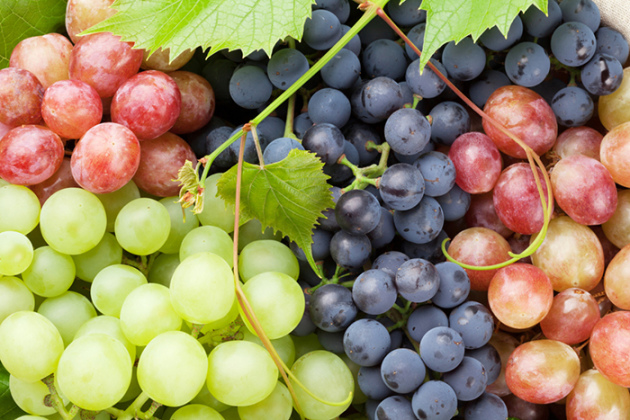
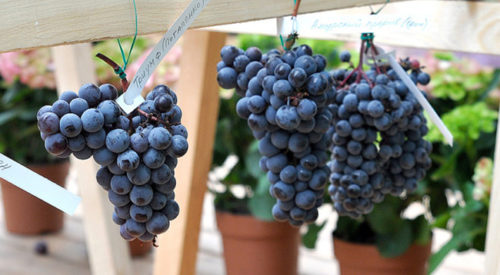
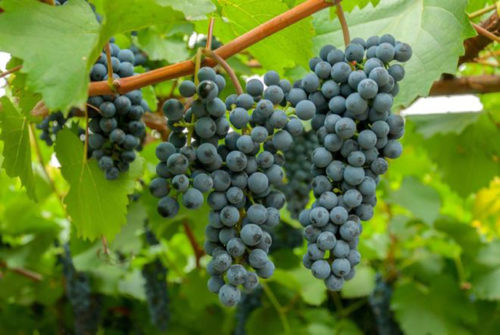
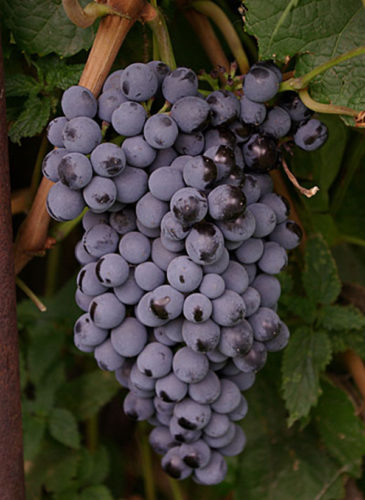
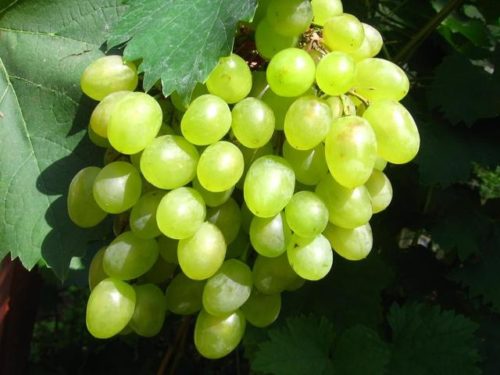
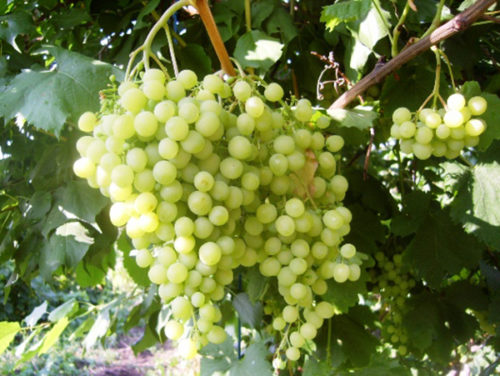
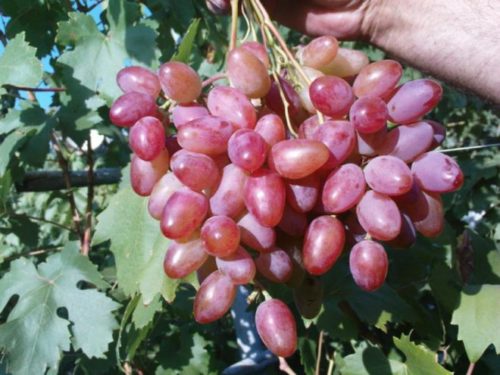
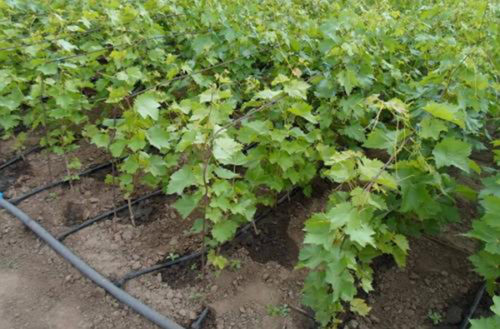


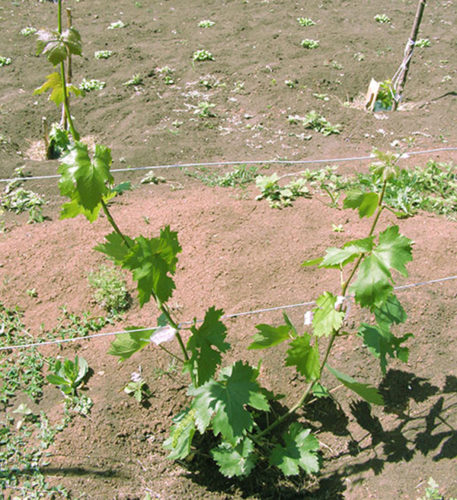
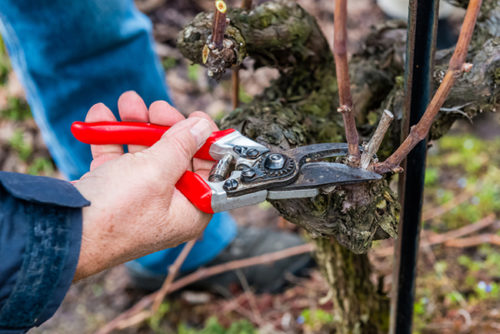
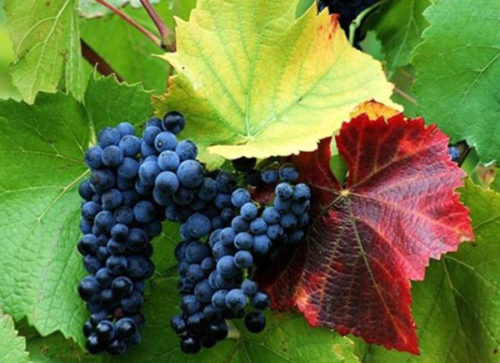
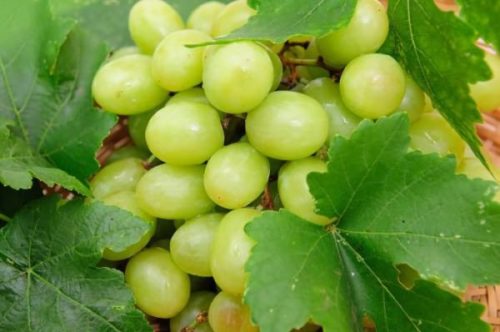
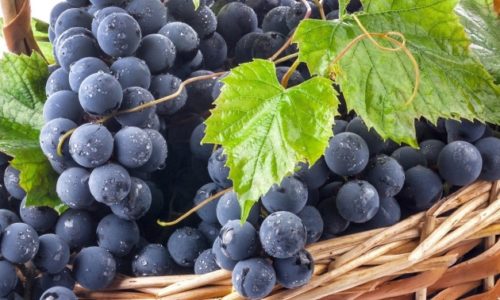
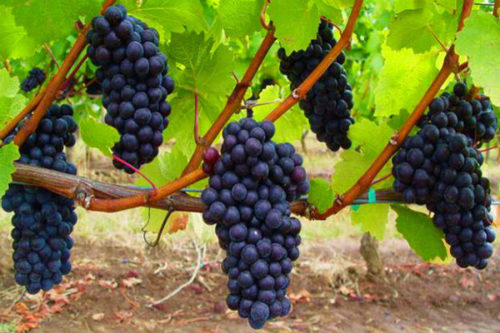
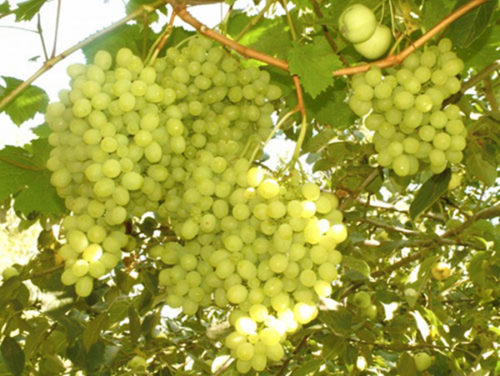












 Start a discussion ...
Start a discussion ...